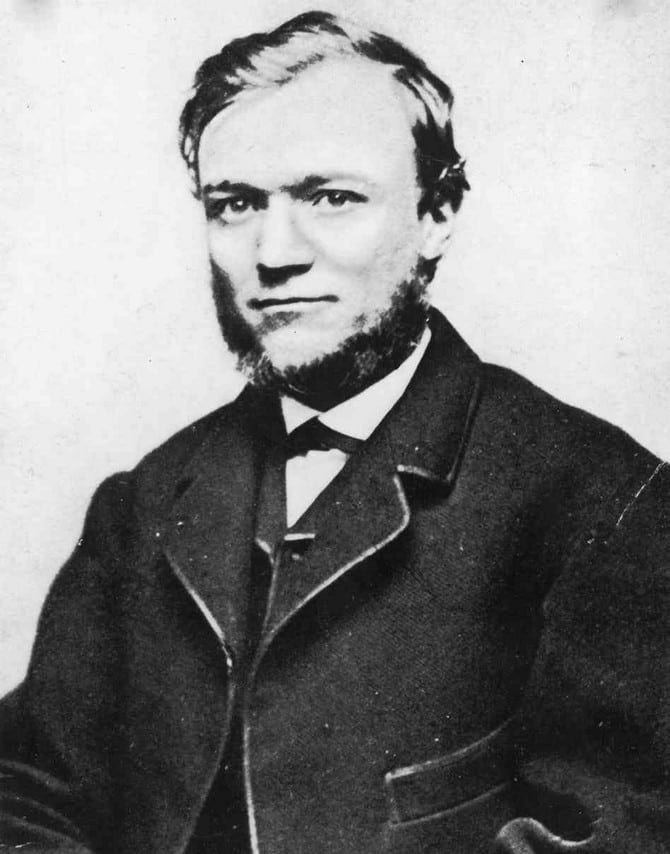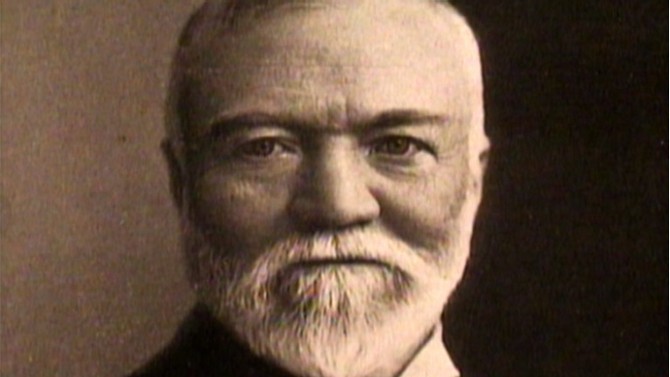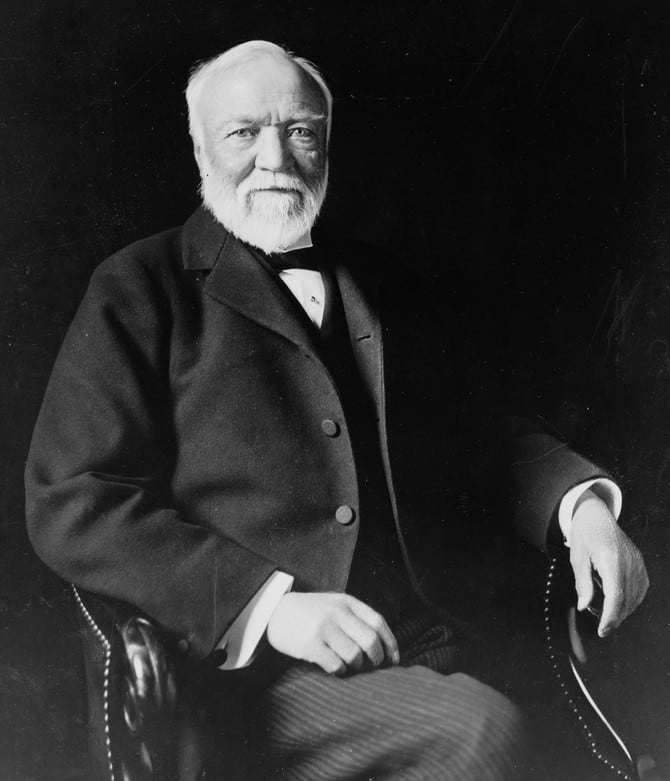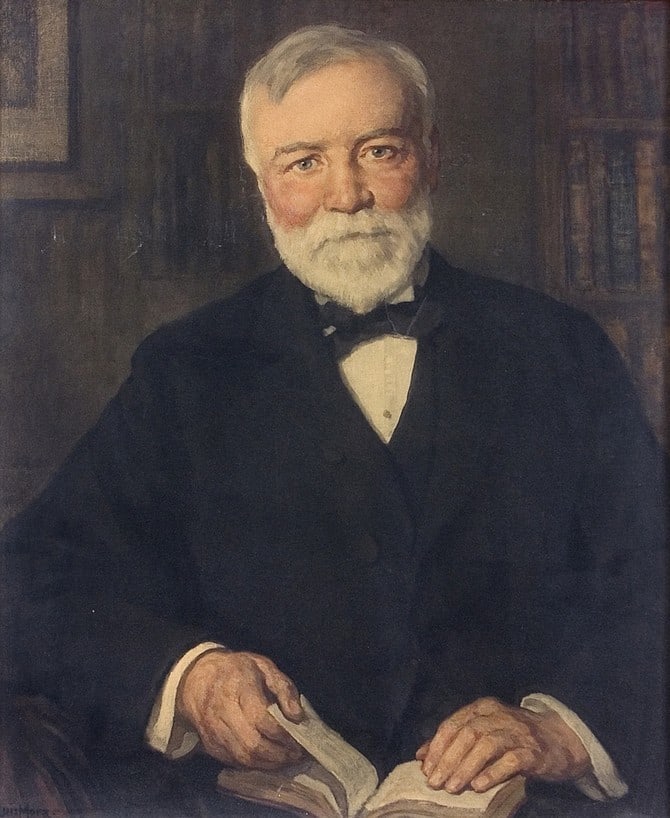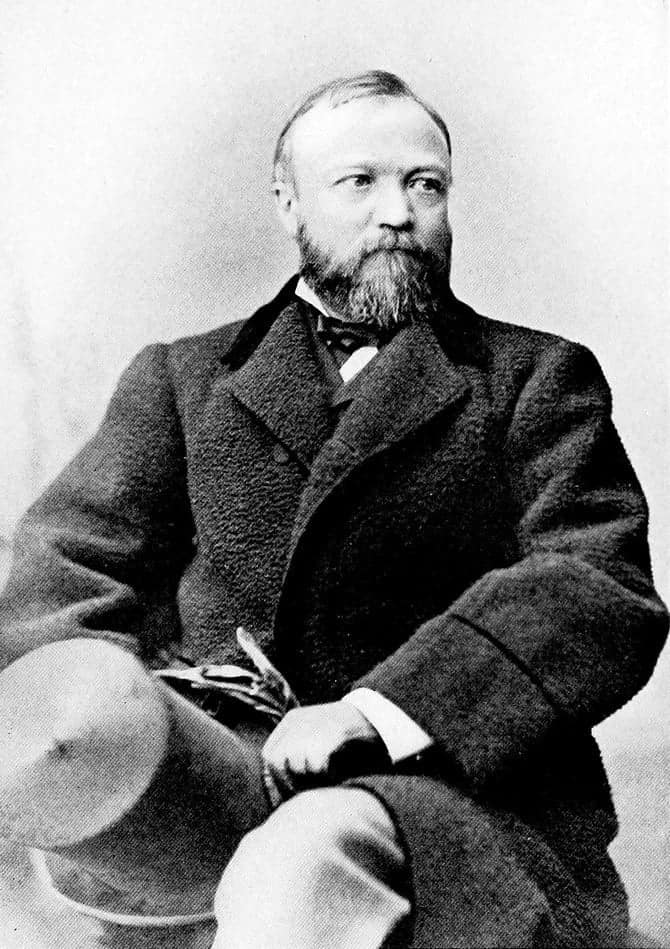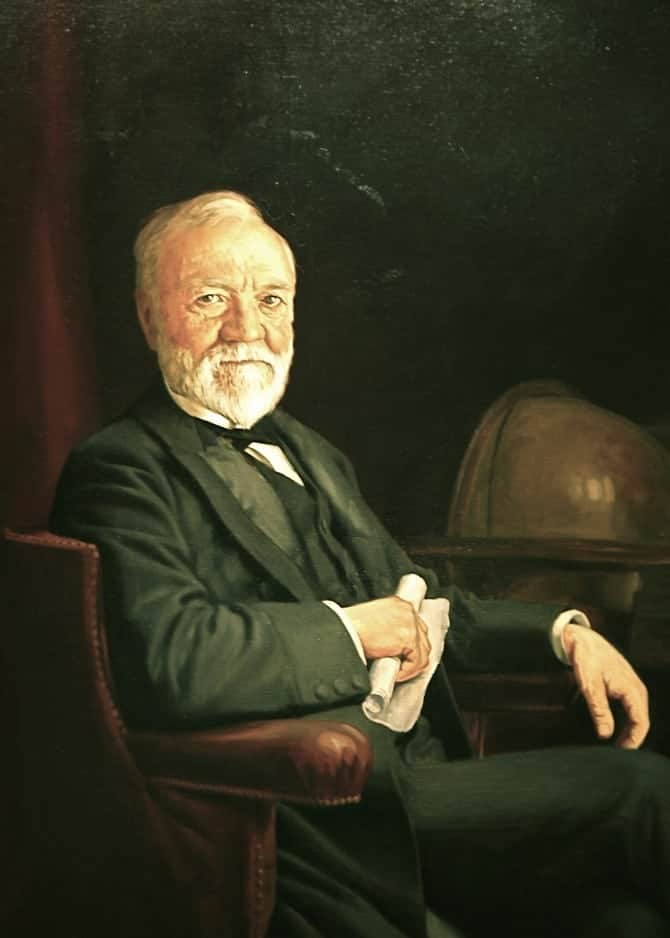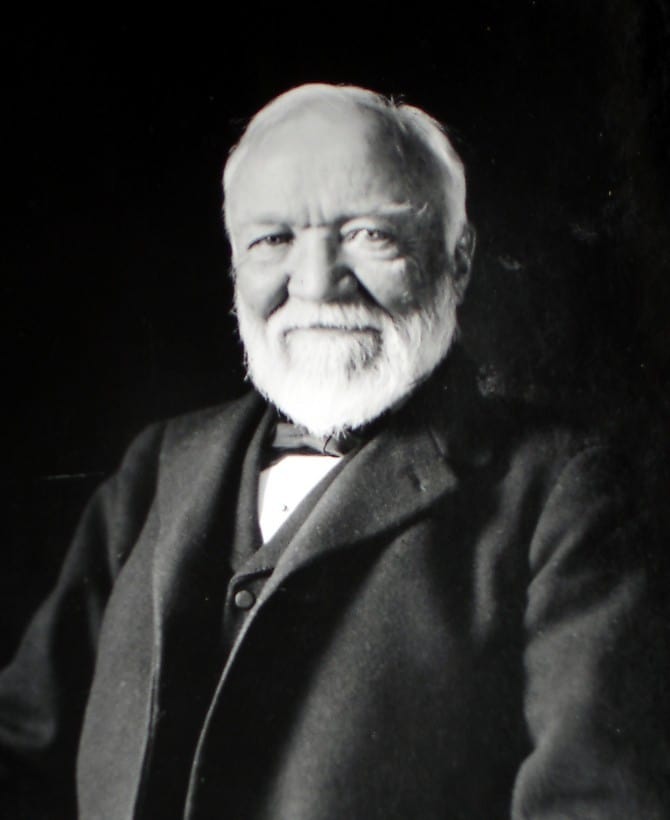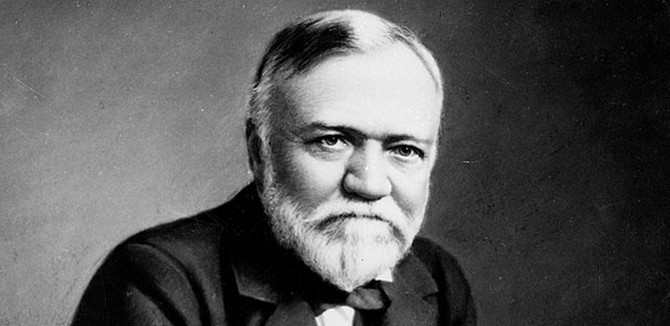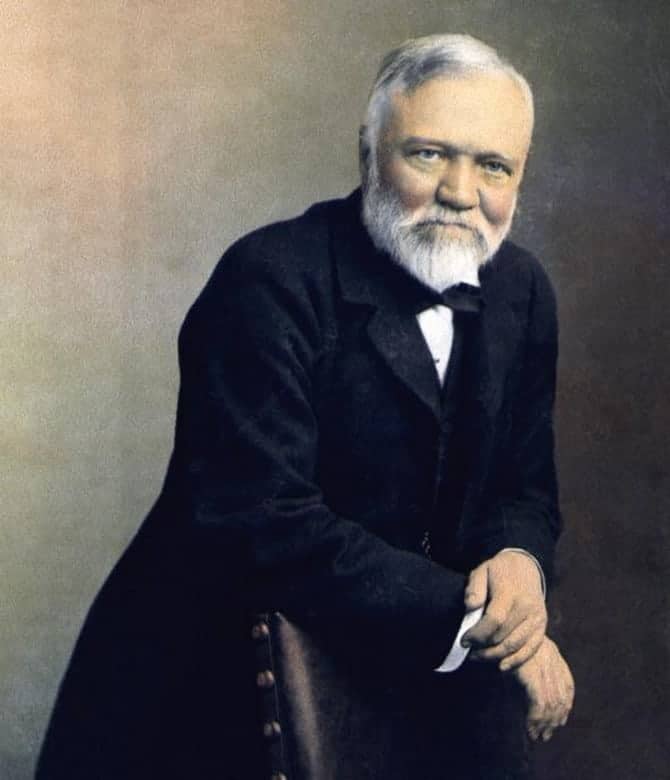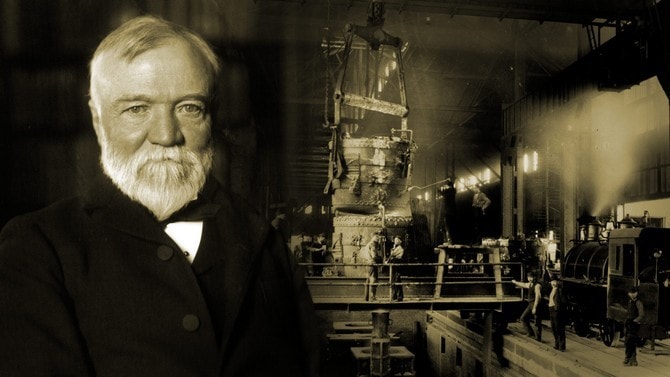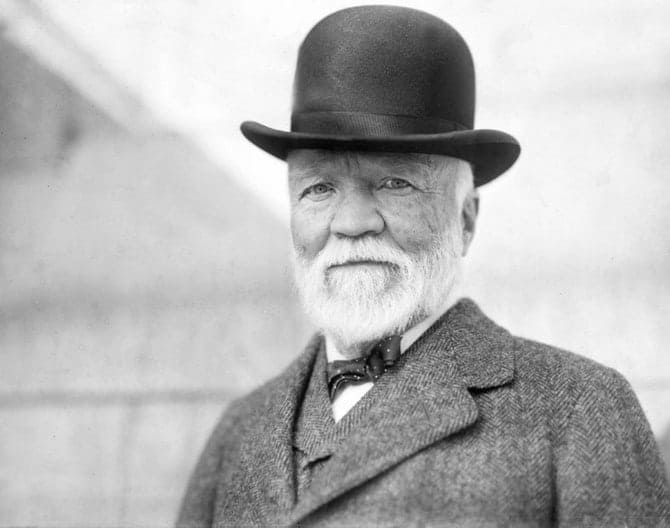Born in Dunfermline, Scotland on the 25th of November 1825, the future industrialist started his life in a weaver’s cottage that was partially shared with the neighboring weaver family.
When he was eleven the demand for heavy damask increased and thus his father had to move to a larger home in Edgar Street. Andrew had little formal education, but the value of learning was passed on to him through his uncle George Lauder who introduced him to the literature and heroes of Scotland.
In 1848 the weaver business was declining and William Carnegie (the father) decided to relocate to the United States, in Allegheny, Pennsylvania, seeking a better life in the New World even if it meant borrowing money to start anew.
The region of Allegheny was producing wool, cotton cloth and other products that increased the popularity of the area. Andrew started to work at the age of 13 as a bobbin boy that changed the spools of thread in a cotton mill for 12 hours a day and six days a week for the wage of $1.2 per week. His father worked in a cotton mill, while his mother was binding shoes for money.
In 1850 Andrew became a telegraph messenger boy for the Ohio Telegraph Company after his uncle recommended him and this allowed him to receive a better salary ($2.5 a week) as well as other perks like free theater admission. The hard work repaid him by learning the important persons and businesses of Pittsburgh, making a lot of connections.
He could translate signals by ear, without the need of a paper slip and thus he became an operator a year later. Aside from loving the plays of Shakespeare at the theatre, he also received a wealth of knowledge from the personal library of Colonel James Anderson who would borrow him books.
In 1853 Thomas A. Scott from the Pennsylvania Railroad Company employed Andrew as a secretary/telegraph operator and he quickly rose through the ranks to become the superintendent of the Pittsburgh Division. He learned about management and cost control from Scott and he also helped him with the first investments.
Andrew invested $500 in the Adams Express in 1855, which contracted the state to carry the messengers. He got the money by placing a mortgage on the family home. Several years later he received some shares in the sleeping car company of T. T. Woodruff as a payoff and he reinvested the returns in railroad related industries like iron, oil, bridges or rails.
During the Civil War Carnegie was appointed as Superintendent of the Military Railways and the Union Government’s telegraph lines in the East, helping to open lines into Washington D.C. In 1864 he invested $40,000 in the Story Farm on Oil Creek which would yield over one million dollars in dividends in a single year.
He left the railroad in 1865 to focus on the other business interests such as the Keystone Bridge Company and Union Ironworks, creating what would become the Carnegie Steel Company, revolutionizing steel production in the country since it was making steel easier and faster than any other companies due to him owning the raw materials, ships and railroads for transport and even the coal fields that would fuel the furnaces. He also adapted the Bessemer process for steel making to improve the process.
Carnegie is considered one of the builders of America due to the way in which he fueled the economy and shape of the country, becoming the largest steel corporation in the world by 1889. Despite the massive appreciation, critics arose as well, since in 1892 the company tried to lower wages at the steel plant in Homestead, Pennsylvania.
The employees refused to work, feeling exploited and this led to the Homestead Strike, as it was later called, becoming a violent conflict when the managers called in guards to break the union. Carnegie was away at the time but he was still considered accountable for the strike.
The incident led him to rethink his whole method and even his financial plans. In 1901 he sold his business to the United States Steel Corporation initiated by J.P. Morgan and he received over $200 million from the sale.
He wanted to remain single as long as his mother was alive since he was taking care of her illness and when she died in 1886 he married Louise Whitfield who was over 20 years younger than him, having a child one year later who was named after Carnegie’s mother, Margaret.
He enjoyed to travel and was friends with a lot of important people like Theodore Roosevelt, William Gladstone, Mark Twain, Herbert Spencer or Matthew Arnold. He liked to write and we have a large number or articles written by him as well as several books, the most famous of which is The Gospel of Wealth published in 1900.
He was now a firm believer in philanthropy, writing: “I propose to take an income no greater than $50,000 per annum! Beyond this I need ever earn, make no effort to increase my fortune, but spend the surplus each year for benevolent purposes.” He built libraries, made extensive donations, but the last part of his life was dedicates entirely to helping others.
His philosophy can be summarized in the Andrew Carnegie Dictum which divided one’s life thus: spend the first third of the life getting all the education you can, spend the next third making all the money you can and spend the last third giving it all away for worthwhile causes.
In 1901 he donated around $5 million to the New York Public Library to expand and he created the Carnegie Institute of Technology in Pittsburg (the Carnegie-Mellon University of today) in 1904. The next year the Carnegie Foundation for the Advancement of Teaching was created and in 1910 he formed the Carnegie Endowment for International Peace as well as a lot of other donations, being said that over 2800 libraries were opened with his funds.
He died on August 11, 1919 in Lenox, Massachusetts at the Shadow Brook estate due to bronchial pneumonia and by that day he has donated around $350,700,000 of his wealth, having $30 millions left in savings which were also given to foundations and charities.

